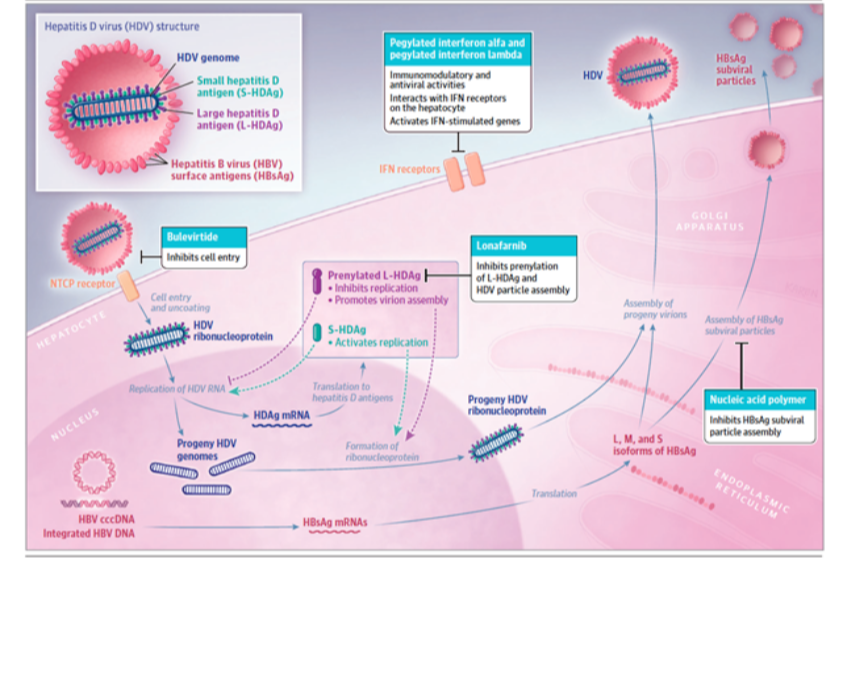+918048034404

This is your website preview.
Currently it only shows your basic business info. Start adding relevant business details such as description, images and products or services to gain your customers attention by using Boost 360 android app / iOS App / web portal.
Learn about Hepatitis Delta Virus (HDV): its re...

Learn about Hepatitis Delta Virus (HDV): its relationship with HBV, routes of infection, clinical impact, screening guidelines, and diagnosis essentials. What is Hepatitis Delta Virus (HDV)? Hepatitis Delta Virus (HDV) is a single-stranded RNA virus that uniquely depends on the presence of Hepatitis B Virus (HBV) to infect hepatocytes and maintain replication. HDV’s small genome encodes the Hepatitis Delta Antigen (HDAg), which exists in two forms — a large and a small isoform. Together, these antigens bind to the HDV RNA to form a ribonucleoprotein complex, surrounded by an envelope composed of Hepatitis B surface antigen (HBsAg). HDV leverages HBV envelope proteins to enter hepatocytes via shared cellular receptors. Interestingly, once inside, HDV suppresses HBV replication — although the precise mechanism remains unclear. HDV replication itself is independent of HBV; it hijacks the host’s RNA polymerase for replication without encoding any enzymatic proteins of its own. This complex relationship between HBV and HDV, and HDV’s ability to persist independently within hepatocytes, makes chronic HDV infection extremely difficult to eradicate. Keywords: What is hepatitis delta virus, HDV and HBV relationship, HDV replication ________________________________________ Pathways of HDV Infection HDV infection can occur in two ways: • Coinfection: Simultaneous infection with both HBV and HDV. • Superinfection: Acquisition of HDV in someone already chronically infected with HBV. Prevalence estimates vary widely by region and study quality. Globally, 6% to 14% of individuals with chronic HBV are estimated to also have HDV. Many infections are believed to originate outside the United States, particularly in regions where HDV is endemic. ________________________________________ Who Should Be Screened for HDV? The 2023 EASL guidelines recommend universal screening for HDV in all HBsAg-positive individuals. In contrast, AASLD guidelines suggest risk-based screening, targeting: • Individuals with HIV • Injection drug users • Men who have sex with men • Persons from endemic regions However, growing evidence suggests that risk-based approaches may miss a significant number of cases. Therefore, broad screening or screening in any patient with elevated liver enzymes or liver decompensation is increasingly advocated. Keywords: who should be screened for hepatitis delta virus, HDV screening guidelines 2023 ________________________________________ Diagnosis of HDV Infection Stepwise approach: 1. Initial Screening: o Serum anti-HDV antibody test (total antibodies). 2. If positive: o Confirm with HDV RNA testing to detect active viral replication. Specific diagnostic situations: • Acute HBV/HDV Coinfection: o Positive HBsAg o Positive Hepatitis B Core IgM o Positive HDV RNA • Superinfection in Chronic HBV: o Negative or weak Hepatitis B Core IgM o HDV RNA essential for early detection, as antibody response may be delayed. Because of the dynamic nature of infection and serology, HDV RNA testing is crucial, especially in suspected acute cases. ________________________________________ Clinical Manifestations of HDV Infection Transmission routes mirror those of HBV: • Contaminated needles and medical equipment • Shared household items (razors, toothbrushes) • Injection drug use • Sexual contact Coinfection • Usually presents as acute hepatitis. • 95% of patients clear both HBV and HDV spontaneously. • Fulminant hepatitis (acute liver failure) is more common with HBV/HDV coinfection compared to HBV alone. o HDV coinfection is seen in 35–40% of fulminant hepatitis B cases. Superinfection • Occurs when an HBV carrier acquires HDV. • 90% of cases progress to chronic HBV-HDV infection. ________________________________________ Long-Term Clinical Course Chronic HDV infection is associated with: • Faster progression to cirrhosis (up to 15% within three years) • Higher liver-related mortality • Increased risk of hepatocellular carcinoma (HCC) o Risk of HCC is nearly three times higher compared to HBV monoinfection. While host factors and HDV genotype variability may influence disease severity, genotype testing is not routinely recommended at this time, as it does not currently alter management decisions. Keywords: HDV progression to cirrhosis, HDV and hepatocellular carcinoma risk ________________________________________ Conclusion Hepatitis Delta Virus represents the most severe form of viral hepatitis. It relies on HBV for entry and egress from hepatocytes but replicates independently once inside the cell. Given the potential for rapid liver disease progression and high rates of liver failure and cancer, early identification and intervention in HDV infection are critical. Universal or expanded-risk screening in HBsAg-positive individuals, coupled with accurate diagnosis through HDV RNA testing, can help improve patient outcomes in this challenging infection.

